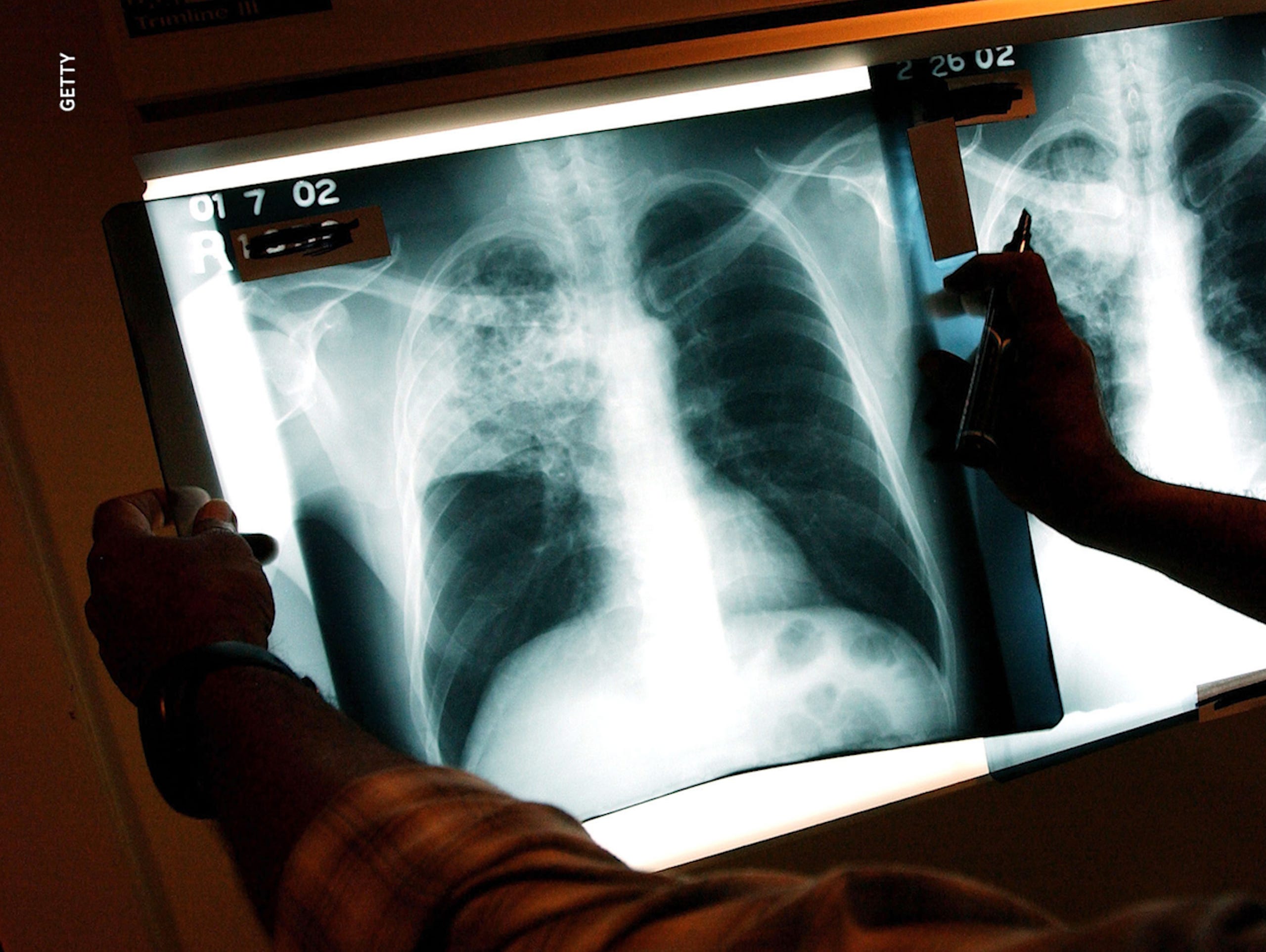
The claim: Respiratory disease tuberculosis is deadlier than COVID-19 but has not received the same public health measures or warnings
COVID-19 may be the latest, and most relevant, respiratory disease, but the unprecedented concern is misleading, a viral Facebook meme suggests.
“10 million people contracted Tuberculosis last year. 1.5 million people DIED,” the post declares. “Did you even know? Were you scared for your life?”
The meme claims that preventive COVID-19 measures, such as mask-wearing, social distancing and closing public spaces and businesses, have not been prioritized for tuberculosis despite its deadliness.
Other memes posit a similar argument by comparing the deaths per day worldwide of tuberculosis versus COVID-19, purportedly a little more than 3,000 to 56.
USA TODAY couldn’t reach the Facebook users who shared the memes for comment.
Fact check: COVID-19 is deadlier than the 1918 Spanish flu and seasonal influenza
An ancient disease
Unlike COVID-19, tuberculosis has plagued humans for more than a millennium, said Dr. Pranay Sinha, an infectious disease specialist at Boston University School of Medicine, and has gone down in history as one of the oldest diseases afflicting mankind.
It is believed an ancestor of the bacteria responsible for tuberculosis, Mycobacterium tuberculosis, arrived on the scene more than 150 million years ago.
Early physicians in Greece, Rome and the Middle East made contributions while studying the disease. Doctors such as the ancient Greek Hippocrates noted tuberculosis, or phthisis (from the Greek phthinein for wasting), appeared to be most fatal in young adults. He accurately cataloged the disease’s cardinal symptoms and identified the characteristic lesions it made in the lungs.
Advances in tuberculosis study plateaued by the Middle Ages. A new clinical form emerged, known as scrofula, evident by swollen lymph nodes on the neck. Many believed a royal touch could heal the swelling. Eleventh-century English King Edward the Confessor is recorded as having cured a young woman suffering from scrofula, the swelling healing a week after he laid his hands on her neck.
Fact check: Flu vaccine hasn’t eradicated the flu, but it has lessened the burden of the virus
Public health efforts and sanitariums
Myobacterium tuberculosis was discovered in 1882 and the clinical benefit of antibiotic streptomycin in 1945. Public health efforts were ultimately the key to ending tuberculosis.
Sinha said that in the USA, where tuberculosis killed one out of every seven people during the 18th century onward, the disease was eradicated through “elimination of poverty, improvement of nutrition and through improvement in living conditions.”
Sanitariums played an integral role in reducing the overwhelming burden of the disease.
Sanitariums were built off the concept of quarantine: Isolate patients to prevent spread and transmission of a disease. German physician Herman Brehmer opened the first sanitarium for treating tuberculosis and other pulmonary diseases in 1859 in the high altitudes of the Silesian mountains, now Poland, as he initially believed the height conferred a physiological benefit. Brehmer revised that theory, making sure to expose patients to open air through outdoor lounges and other similar shelters, in addition to a healthy diet and exercise.
The first American facility was established in Asheville, North Carolina, in 1875 by German physician Joseph Gleitsmann. By 1904, there were 115 facilities with about 8,000 beds, growing to 839 facilities with more than 136,000 beds by 1953. By the mid-1960s, most sanitariums were shut down as patients receiving new, effective drugs soon became noninfectious.
Fact check: Quarantine ‘camps’ are real, but COVID-19 camp claim stretches truth
Tuberculosis versus COVID-19
Tuberculosis and COVID-19 may both be respiratory diseases, but there are differences.
A bacteria causes tuberculosis; a virus genetically related to the severe acute respiratory syndrome coronavirus, SARS-CoV, causes COVID-19. Both are spread through close physical contact. When a tuberculosis-infected individual coughs, Mycobacterium tuberculosis can remain suspended in the air longer, until it’s inhaled by someone else, usually in a confined space.
“Tuberculosis spreads usually in hours, and for COVID, it’s a virus with very short interaction, (which) results in the spread of the infection,” said Dr. Shama Ahuja, director of TB Surveillance and Epidemiology at the New York City Department of Health and Mental Hygiene.
The body’s immune reaction to the pathogens also differs.
“(Tuberculosis) basically puts a little ‘bunker’ inside your lung and hangs out there until you have a weakness in the immune system,” Sinha said. “Say you get HIV, start steroids or cancer therapy. In those weak moments, the bacteria emerges from the ‘bunker’ and infects the rest of your lungs.”
Once activated, tuberculosis does not stay in the lungs: It can infect the central nervous system (which includes the brain), muscles, skin, liver, lymph nodes and reproductive organs. Tuberculosis can persist in the body for up to 30 years, Ahuja said.
Scientists are grappling to understand how the novel coronavirus affects the immune system, especially because there is a broad spectrum of disease severity, from asymptomatic to gravely ill. What is understood is that once the virus hijacks cells, infection in the upper respiratory tract is easier to recover from, but anything below the vocal chords can disrupt respiratory function. Sometimes, the body’s own overactive immune response to the virus leads to death.
Fact check: Hydroxychloroquine does not work better abroad
Should everyone wear masks and social distance?
There are more than 6 million reported cases of COVID-19 in the USA and more than 183,000 deaths, according to the Centers for Disease Control and Prevention’s COVID-19 data tracker. The World Health Organization estimated 10 million new global tuberculosis cases in 2017, along with 1.6 million deaths, mostly in developing countries with poor health and socioeconomic infrastructures. The bulk of the tuberculosis disease burden is shared by India, Indonesia, China, Nigeria, Pakistan and South Africa and is also endemic where there is high incidence of HIV infection.
In more developed countries, tuberculosis is less common and if present, typically seen in individuals from tuberculosis-endemic countries, health care workers or people who are HIV-positive.
In the USA, up to 13 million individuals live with latent disease – infected but not showing any clinically manifested symptoms – and the rate of cases is greater among non-U.S.-born individuals than U.S.-born.
“In America and Western Europe, the occurrence of TB is so low that it cannot be compared to coronavirus,” Sinha said. “That said, if you’re living in a high-burden country, say in Africa or southeast Asia, then the impact of TB cannot be overestimated.”
Ahuja said that public health strategies in most developed countries stopped tuberculosis spread.
“A really important intervention that we do here for TB that we’ve been doing for the past 30 years in New York is contact tracing,” she said. Contact tracing, which is also employed for COVID-19, entails identifying everyone who may have come into contact with an infected or suspected infected person.
Ahuja said that once individuals have been identified, tested and placed in treatment if positive, “the bacterial burden falls within a few days of starting treatment” and with it, the risk of transmission.
The bacille Calmette-Guérin vaccine against tuberculosis was developed more than 80 years ago. Most individuals in tuberculosis-endemic countries receive it during infancy or early childhood. In the USA, the vaccine is recommended for a select few at risk of developing the disease, including children who have tested negative but are continually exposed via a tuberculosis-positive adult or health care workers providing care for affected patients. Though the BCG vaccine does not entirely avert the risk of tuberculosis infection, it provides some immunity and has prevented deaths.
Our ruling: Missing context
Though tuberculosis is a deadlier disease than COVID-19, geographic, socioeconomic and public health context is lacking from this claim. We rate this claim as MISSING CONTEXT. Tuberculosis has existed for far longer than COVID-19, and making comparisons in terms of cases and mortality is not equivalent. The greatest burden of tuberculosis rests primarily in developing countries in Africa and southeast Asia and those with a high prevalence of HIV infection. The disease is not a significant concern in the USA and does not necessitate that everyone engage in mask-wearing, social distancing and other preventive measures, especially as tuberculosis is easily preventable and curable.
Our fact-check sources:
- Journal of Preventive Medicine and Hygiene, Jan. 14, 2017: “The history of tuberculosis: from the first historical records to the isolation of Koch’s bacillus.“
- Sultan Qaboos University Medical Journal, Nov. 8, 2013: “Of Animalcula, Phthisis and Scrofula: Historical insights into tuberculosis in the pre-Koch era.”
- Child’s Nervous System, Jul. 19, 2015: “The Roman Empire legacy of Galen (129-200 AD).”
- Respiratory Medicine, Sept. 1, 2006: “The history of tuberculosis.”
- Medscape, May 10, 2019: “Overview of Scrofula.”
- Anglican and Episcopal History, March 1999: “The Ritual of Royal Healing in Early Modern England: Scrofula, Liturgy, and Politics.”
- Annals of the American Thoracic Society, Oct. 14, 2015: “Treatment of Tuberculosis. A Historical Perspective.”
- The Atlantic, March 21: “A Historical Lesson in Disease Containment.”
- CDC, Dec. 12, 2016: “Tuberculosis: history.”
- The Lancet, July 3: “Comparing SARS-CoV-2 with SARS-CoV and influenza pandemics.”
- Vox, Aug. 3: “Scientists say the coronavirus is airborne. Here’s what that means.”
- CDC, June 25: “Coronavirus Disease 2019 (COVID-19): Food Safety.”
- MIT Technology Review, April 15: “How does the coronavirus work?“
- Nature, Aug. 17: “COVID-19 poses a riddle for the immune system.”
- CDC COVID Data Tracker
- World Health Organization: “Global Health Observatory (GHO) data: How many TB cases and deaths are there?”
- Mayo Clinic, Jan. 30, 2019: “Tuberculosis.”
- CDC, Sept. 6: “Tuberculosis (TB): Data & Statistics.”
- CDC, March 19: “Morbidity and Mortality Weekly Report: Tuberculosis – United States, 2019.”
- NCBI Bookshelf: StatPearls, June 7: “Tuberculosis.”
- Johns Hopkins University & Medicine – Coronavirus Resource Center: “Contact Tracing.”
- CDC, March, 15, 2016: “Tuberculosis – Vaccines.”
- Maedica: A Journal of Clinical Medicine, March 5, 2013: “History of BCG Vaccine.”





